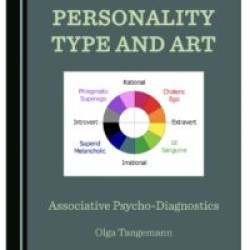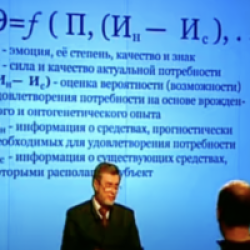2. What is the subtype?
“In the associative socionics, under the subtype, we understand the type of personality, which acts as compensation to the main type like the additional temperament is determined. In addition to 4 “clean” temperament types, there are mixed temperament types, for example: sanguine – choleric or sanguine – phlegmatic. “
“Types and subtypes” Discussion. 2014
Participants: O. Tangemann, E. Filatova, V. Meged, S. Churyumov, A. Sapegin and D. Golichov. http://socionics4you.com/post-536
3. Criticism about subtype theories
“… The problem, in my opinion, is that socionics authors, trying to create the theory of subtypes, can not be freed from the slavery of socionic terminology, can not go beyond its framework. Trying to describe something new, they simply create modifications of old socionic terms. An important problem in distinguishing types and subtypes is the fact that the descriptions of subtypes are largely coincide with the descriptions of socionics types. “
D. Lytov. Subtypes, “masks”, accents”. 2006 https://www.socioniko.net/ru/1.1.Types/podtip.html
4. Specification or substitution?
DCNH subtype system: “The subtyping in socionics is solved in two ways. The first way runs through the introduction of special dichotomies. In relation to the usual generalized dichotomy, they are concretizing. ” “Under terminality, I understand the ability to bring to the end and a tendency to ordering. Under the initiality – the opposite ability to initiate, it is easy to switch and a certain chaos in things and actions. As you can see, this is the specification of the usual dichotomy of rational / irrationality. It would be wrong to think that any rational type has a perfect order at home, he clearly plans everything, and any irrational type always scatter things and does no planning.
In reality, there are often two intermediate gradations between the extreme poles. Terminal people belong to bright rationals and ordered irrationals. Bright irrationals will be characterised by initial behaviour, as well as disordered rationals. “
– Many still do not realize that the new terms are just a partial presentation of the “old terms for socionics dichotomies. And if you admit this, we will come to understand that the same terms in the theory of DCNH are used to determine types and subtypes simultaneously. Essentially nothing new but easy to mix type with a subtype.
5. Functional approach to subtyping
“The second way implies to consider the strengthening of functions within the classical model. The fact is that the manifestation of the function is not equal to its location – hierarchical place in the structure of the psyche. ” V. Gulenko
– If it is about the strength of the function, then in the model A, it is defined accordingly to the place in the model. The difference of being strong according to the model and due to gaining experiences and knowledge is not explained by V. Gulenko.
6. Two approaches – one result or more?
DCNH Subtype theory continues: “Strengthening of the linearly directed functions E and P ( Fe and Te), no matter what position this pair occupies within the model, forms a dominant subtype. These functions are enhanced pairwise, because they have close energy. – Most often, our (humanitarian) Socionics School determines the octal subtype not dichotomic one, but through the strengthening of one of the eight functions of the socionic model.”
-Not clear what are these two approaches (dichotomic and model one) identify exactly in relation of the type and subtype. Could the subtype by dichotomy differ from the one identified by the model? If functions enhance/strengthen in pairs, their location in the model must matter.
7. Theoretics errors
Another attempt to explain intra-type differences was the very first theory of subtypes by V. Gulenko which suggests only two subtypes for each type – rational or irrational one, depending on the energy dominance of the first or the second function in the model A. S. Churyumov argued that V. Gulenko did not provide the explanation on how the energy dominance is different from the information dominance in a first place.
From the article “O. Tangemann “A critical review of the interview with Viktor Gulelenko.” 2014 http://socionics4you.com/post-2756
8. Similar delusions of theoretics
According to V. Gulenko, the subtype is often more noticeable than type and therefore it is easier to distinguish the subtype than the type. As a result, his followers began to determine subtypes, without realizing that they identify actually the type qualities.
In MBTI, it is believed that the second extroverted function in introverts is noticeable more than the first one. Thanks to this subjective belief of Isabelle Myers Briggs, the author of the MBTI model, their functions were rearranged in a way that rational introverts received irrational function as their first and strongest function. And the opposite is true for irrational introverts: they exchanged their strongest functions with the rational introverted types. ISFJ – SiFe and ISFP – FiSe.
9. Principles of the TPE subtype system
1. The type is stronger manifested than the subtype in most situations.
2. Type cannot coincide with the subtype. The subtype by definition should differ from the type as its variant.
3. The positions of the model correlate with the strength of the function and have a hierarchical order not by a chance. For example, the second/creative function cannot prevail over the first program function.
4. The relation between any 2 functions or dichotomous traits is understood as balanced or unbalanced.
5. Type and subtype share at least 1 TPE dichotomy and the functions, associated with this dichotomy.
10. Approach to identifying subtypes
The TPE system identifies the types and subtypes with the reference to energy and information metabolism. Division on energy and information in relation to subtypes is formal. TPE characterises the type at the level of the 4 small groups called TPEs and TIM is referred to the level of 16 types. The dichotomous approach is used to identify the subtype at the level of the 4 TPEs. TPE profile – the distribution of the 4 TPEs in the psyche is also called the Associative model.
The functional approach is used to identify the type and subtype at the level of 16 types with the reference to the clubs of professional interest: NT, ST, NF and SF.
11. Quantitative distribution as a basic principle
Both approaches are interdependent and allow to identify “energy” the type and subtype at the level of the TPEs and at the level of the16 types, based on the quantitative distribution of dichotomies and functions. This approach is standardized, it is used in associative tests and in the practice of associative psychodiagnosis (APD) when analysing preferences in music and art.
12. Interdependence of the two approaches
We identify the functional profile by considering what club of interest does the person belongs: Managers ST, Humanitarians NF, scientists NT or socials SF. There will be only 2 subtypes available for the type LII within the TPE group of Superego: EII or LSI due to the common functions of Ti in LSI and Ne in EII. At the level of the 4 TPEs, there will be additionally considered subtypes ILE, LIE and ILI. The choice of subtypes will depend on what dichotomous trait stands out and is shared between type and subtype. If this is introversion then the choice of the subtype is ILI. ILI has the program function of intuition. This means that within the Superego group the subtype will be also intuitive – EII.
If statics dominates then TPE subtype will be ILE. Within the Superego group of types the subtype EII will remain. And only if the rationality is increased the subtypes for LII will be LIE and LSI.
13. TPE Profile
The TPE profile reflects the quantitative distribution of 4 TPEs in the psyche of a person from the strongest to the weakest. The leading TPE takes always the first position and is linked to the energy of the type – type energy. Three other TPEs are considered as subtype energies. For example, for any Superego type we have the choice of only three subtype energy available: Id, Ego, Superid.
Id – extroverted, irrational, static energy type; sanguine temperament, flexible.
Superid – introverted, irrational, dynamic energy type; melancholic, adaptive.
Ego – extroverted, rational, dynamic type of energy; choleric, linearly assertive.
Superego – introverted, rational, static energy type; phlegmatic, stable.
14. Six TPE profiles
We use 6 main profiles for each of the 4 TPE groups. All in all, 24 TPE profiles are possible. For example, 6 TPE profiles are available for Superego types:
1) Superego – Id – Ego – Superid
2) Superego – Id – Superid – Ego
3) Superego – Ego – Id – Superid
4) Superego – Ego – Superid – Id
5) Superego – Superid – Id – Ego
6) Superego – Superid – Ego – Id
15. Types of psychodynamics.
The two strongest TPEs in the associative model are the most important for subtyping. They play a major role in establishing the balance of the psyche like the two strongest functions create the Ego block in the model A.
Regardless of which position, these types of energy occupy (first or second), together they form 6 types of psychodynamics:
Extroverted: type of psychodynamics: Ego – Id and Id – Ego
Introverted: Superego – Superid and Superid – Superego
Rational: Ego – Superego and Superego – Ego
Irrational: Id – Superid and Superid – Id
Static: Superego – Id and Id – Superego
Dynamic: Ego – Superid and Superid – Ego
16. Development of subtypes.
The development of subtypes is considered in the concept of associative socionics as the development of the abilities of other types. People tend to develop the abilities of the types with similar strong functions. This principle of the development of subtypes is described in detail in the article “The theory of subtypes” http://socionics4you.com/post-4169
Recently, a scientist Mina Baremani conducted a statistical analysis of research results in Myers-Briggs typology and came to similar conclusions:
“Data shows that people prefer one function of judgment and one function of perception and more often they are used as the strongest functions. Over time, they tend to develop both of the function of judgment and both of the perceptionfunction. Their subordinate functions are functions opposite to their preferred method of judgment and a preferred method of perception – as a rule, less used / develop. “
17. Mental and vital functions.
Mental functions are stronger than the vital ones.
For the static type it is easier to develop static functions and the opposite is true for dynamic types since dynamic functions are conscious for them according to the Model A. People more often use the functions of the mental part than the vital part of the model. This means that mental functions, in general, are more developed. For this reason we do not use he theory of dimensionality by A. V. Bukalov, no the concept of quadras.
The erroneous conclusion according to the theory of measurements implies the distribution of the strength of the functions in the model A as follows: first function is stronger that the 7th .The second function is weaker than the 8th. The third functions is stronger than the 5thand the 4th function is stronger than the 6th.
1> 7, 2 <8, 3> 5, 4 <6
18.The strength of the functions.
Approximate distribution of the strength of functions in model A as a percentage:
60% – 40% 70% -30%
Ne 25 – 18 Ni Ne 25 – 12 Ni
Ti 15 – 13 Te Ti 20 – 9 Te
Fi 8 – 3 Fe Fi 10 – 2 Fe
Se 12 – 7 Si Se 15 – 7 Si
“Function numbering in model A”, I. Rozhdestvensky,http://socionics4you.com/post-16086
19. The principle of balancing.
The strength ratio between any two functions or traits can be either balanced 60 to 40% or unbalanced 70 to 30%.
70% 30% 60% 40%
Intuition Sensing Logics Ethics
It is easier to develop the abilities of types within the same club of interests: NT scientists, SF socialists, ST managers and NF humanitarians.
20. How does balancing work for subtypes?
Intuitive subtype of ILE reveals the bigger difference between intuition and sensing. Logicalsubtype reveals the bigger gup of difference in strength between logics and ethics.
50% 15% 25% 10%
intuition sensing logics ethics
35% 20% 30% 5 %
intuition sensing logics ethics
Figure 3. Percentage of the functional strength for the intuitive and logical subtype of ILE.
21. Conclusion.
It is easier to develop the abilities of the most similar types.
It is more difficult to develop the abilities of the types with opposite functions.
For this reason, when identifying subtypes we do not consider the types with opposite functions as a subtype.
We do not make additional profiles for subtypes either because we use the same system for type and subtype identification.
References:
1) O.B. Tangemann “Theory of subtypes” http://socionics4you.com/post-4169
2) O.B. Tangemann “The system of subtypes of TPE. Short description. http://socionics4you.com/post-465
3) O.B. Tangemann “A critical review of V. Gulenko’s interview” http://socionics4you.com/post-2756
4) V.V. Gulenko “Subtype Theory: DCNH System in Humanitarian Socionics” https://socioniks.net/article/?id=35











